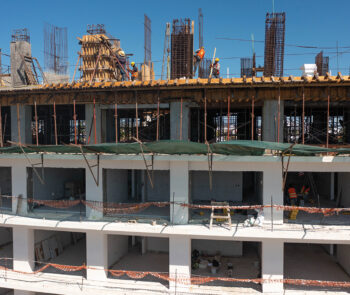How to Make Changes to an Existing Fideicomiso
In previous editions of Vallarta Real Estate Guide, several experts have been consulted about what a Trust is and its usefulness for foreigners when acquiring a property that is within the restricted zone of Mexico, which is defined as an area of national territory where foreigners are prohibited from acquiring direct ownership of real estate property.

Of course, foreigners can buy properties in Mexico located in those designated areas through a Fideicomiso, a banking contract where the bank (trustee) holds the trust deed for the buyer (beneficiary).
The restricted zones of Mexico are essentially all land located 100 kilometers from any national land border and 50 kilometers from any ocean.
Trusts in restricted areas originated with an agreement signed by President Lázaro Cárdenas on November 22, 1937, when he authorized national credit institutions to carry out this process which would allow foreigners to acquire real estate in restricted zones.
Although on paper, the owner of the property is the bank, the property is not an asset of the bank, so the beneficiary has all the rights to the property, which include the right to sell it, rent it, remodel it, and bequeath it to his or her heirs.
It is possible that over time, the holder of a Trust may need certain changes to be made to an existing document, either because a relationship has ended, a new marriage has begun, or because of the death of the named beneficiary.
Withdrawal of One of the Trust Parties
If a married couple created a Trust and then files for divorce, they must follow the procedures below to remove one of the parties from the Trust (obviously always respecting divorce agreements).
The change must be formalized through a transfer of trust rights from the party that is being removed from the trust, in favor of the party that will keep the property. This transfer of rights must be done with a deed, meaning that the process is similar to that of one party selling the property to the other party.
This title change will generate the following fees:
- Notary public
- Municipal and state certificates
- Capital gains and transfer taxes
- Bank commission for the modification of the Trust
- Legal fees
Change of Beneficiary
The Trust always lists a beneficiary. In some cases (such as a legal separation, legal union, or death of the benefactor), the owner needs to change or update the beneficiary.
The following procedures must be followed in order to change the beneficiary of a Trust:
- Write a letter of instruction, in which the banking institution is ordered to modify the Trust, change the beneficiary, or add a new one.
- Ratify that letter of instruction before a Mexican notary public.
- If the trustee is abroad, the signature must be certified before a notary public with jurisdiction in their city of origin, and the letter must be legalized or apostilled (depending on the country of origin of the trustee).
- Some banks may require that the modification of the Trust be formalized by means of a public deed.
This change process is subject to the following fees:
- Notary public, for the ratification of the modification of the Trust
- Banking institution, due to the modification of the Trust
- Legal fees
It should be noted that the cost of each of these procedures varies according to the type of property, the banking institution where the Trust is held, and the notary public.
Finally, it should be noted that there are three parties involved in the Trust: the Settlor, who is the owner of the assets or rights that are transferred to the trust institution (therefore, they must have the capacity and legitimacy to effectively carry out said transfer), the Trustee, which is the institution that receives the trust property or rights and executes the entrusted purposes, and the Trustees or beneficiaries, in favor of whom it was established.



